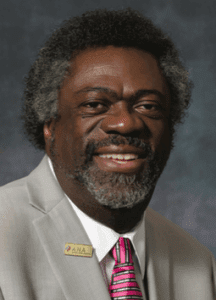American Nurses Foundation helps us tell our stories.


What a powerful message about our profession told by two of our own. Their segment resonated with me even more because my colleague, American Nurses Foundation Board Vice Chair and former Chair Joyce J. Fitzpatrick, PhD, MBA, RN, FAAN, is a strong advocate for narrative nursing—the practice of storytelling.
In an April Nurse Leader article, Fitzpatrick and her coauthors briefly described the history of storytelling in nursing education and practice, such as the longstanding use of case studies. They also shared compelling stories from four clinical nurses who had participated in an educational program on narrative nursing. More recently, Fitzpatrick helped nurses hone their storytelling skills as a way to enhance the nurse-patient relationship, as well as to support, educate, and inspire colleagues, during an American Nurses Foundation workshop at the ANCC National Magnet Conference® in Orlando, Florida.
Our ability to openly share our expertise and personal experiences is crucial to effective advocacy and ensuring nurses’ continued, positive impact on the health of individual patients and our nation. We must do all that we can to help patients, consumers, policymakers, and the media better understand who we are and what we do.
For example, we still have our work cut out for us when it comes to our presence and portrayal in the media. In their research brief, “The Woodhull Study Revisited: Nurses’ Representation in Health News Media,” Diana J. Mason, PhD, RN, FAAN, and colleagues found that nurses remain largely invisible when it comes to being quoted in or sought out as sources for health-related news stories. Using those findings as a jumping-off point, nurses attending our Membership Assembly generated a wide range of strategies for helping nurses and the media better understand each other, as well as position nurses as influencers.
Among those recommendations are for ANA to build a database of nurse experts who can quickly respond to media requests and showcase our knowledge and impact, and for ANA to share nurses’ stories widely. Another simple idea that everyone can do immediately is to identify yourself as an RN on social media, when writing letters to the editor, or when speaking in your communities on health-related issues.
As nurses, we tend to be very humble. But our knowledge, skills, and compassion all have an impact—even when we don’t realize it at the time. I’m proud to say that patients who I took care of 30 years ago consider me part of their families and invite me to their barbecues and weddings. Who thought that just doing my job would lead to a bond that powerful?’
I also want to tell you another story. The Foundation, the philanthropic arm of ANA since 1955, is crucial to the work of nursing. It provides nurses with critical resources ranging from educational programs to awards and grants, supports the innovative HealthyNurse, HealthyNation™ initiative, and gives everyone a public way to honor a nurse, among other efforts. Like ANA, its mission is “a healthy world through the power of nursing,” including by elevating the image of nurses.
So, here are my requests. First, I encourage you to tell your stories—whether it’s to help support a colleague, educate a student, improve a practice, or advance an issue you feel passionate about. Second, I urge you to honor a colleague or help sustain other programs by donating to the Foundation. When we support each other, we amplify nursing’s voice.


Ernest J. Grant, PhD, RN, FAAN President, American Nurses Association



















1 Comment.
Stories add human interaction to situations, it makes the situation relatable and understandable,